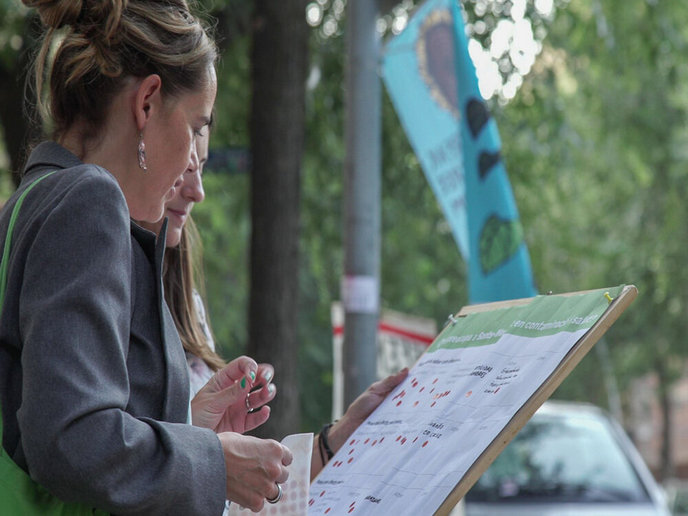Public health: empowering citizens to monitor urban pollution
City life can benefit from easy access to employment opportunities, cultural activities and transport links, but it can also bring some disadvantages. Urban environments often have higher levels of air pollution and noise than rural areas, and tend to contain fewer green spaces. “To properly study the impact of urban environments on health, we need to be able to estimate personal exposure to these risk factors,” explains CitieS-Health (Citizen Science for Urban Environment and Health) project coordinator Xavier Basagaña, from the Barcelona Institute for Global Health in Spain. “This can be difficult for scientists alone to measure. Important information such as physical activity or other personal habits also need to be taken into account.” Recognition of this challenge has led to greater citizen involvement in urban science projects over the past few years, with the public called upon to participate in campaigns to monitor air quality or noise. “We felt, however, that citizen science has not been fully used to evaluate the link between environmental exposures and health,” says Basagaña. “This was the main aim of CitieS-Health.”
Getting citizens involved
Launched in January 2019, the CitieS-Health project ran across five European cities. A different study was created in each, focused on a topic related to health and the urban environment: air pollution, biomass burning, noise pollution, industrial pollution and urban design. In Barcelona, citizens helped to shape a study into how pollution can affect mental health. Some 300 citizens provided around 2 500 measurements of cognition and well-being on different days. These were then compared to air pollution concentrations that citizens had helped to monitor, using personal nitrogen dioxide collection tubes. In Lucca, Italy, a survey of 1 025 residents in the Serchio Valley led to the decision to focus on chronic kidney disease. To date, 367 residents have been interviewed about their occupation, diet and lifestyle, and 353 have donated biological samples. Other studies looked at the impact of noise on health (Ljubljana, Slovenia) and biomass burning and health (Amsterdam, the Netherlands), as well as the links between perceptions of environmental quality, physical activity and stress (Kaunas, Lithuania). “In each of these cities, scientists enjoyed a strong interaction with citizens via workshops, meetings and carrying out surveys,” notes Basagaña. “Citizens were engaged in all phases of research, including deciding the research questions. This helped to ensure the social relevance of each study, and made the results more interpretable.”
Promoting further participation
CitieS-Health runs until June 2022, and Basagaña and his team are still analysing and discussing incoming data. Nonetheless, some preliminary results are emerging: the Barcelona study detected an association between air pollution levels and attention performance and perceived stress. In each case, the value of citizen involvement in all phases of research has been underlined. “Citizen participation made these pilots more relevant to local community needs, provided insights that improved the design of studies, and helped us to communicate the findings,” adds Basagaña. “This is about bringing science closer to society.” The project has developed an online interactive citizen science toolkit to help projects to engage with communities and tackle issues of common concern. The toolkit contains examples and resources from the project, as well as tips on designing citizen-driven research studies and collecting data. “The project website also contains a section through which anyone who works on participatory projects can suggest new ways to engage citizens in science,” says Basagaña. “We also plan to publish a paper on lessons learned from CitieS-Health. All this will hopefully be useful for upcoming citizen science projects.”
Keywords
CitieS-Health, urban, pollution, industrial, air, health, biomass, lifestyle







